Introduction
image” of everyday matter. This exotic form consists of particles that are counterparts to familiar ones like electrons, protons, and neutrons. However, these particles have opposite charges and specific quantum properties. For example, an electron has a negative charge, but its mirrored counterpart, the positron, has a positive charge. Protons have antiprotons with negative charges. Even neutral particles like neutrons have antineutron equivalents with reversed quantum characteristics.
The concept was first proposed by British physicist Paul Dirac in 1928. Dirac developed an equation combining quantum mechanics with Einstein’s special relativity. This equation predicted particles with the same mass as electrons but positive charges. The prediction was confirmed in 1932 by American physicist Carl Anderson. Anderson detected positrons in cosmic ray experiments, marking a pivotal moment in science. His discovery revealed the existence of these mirrored particles and sparked new exploration.
Since then, this scientific mystery has captivated both researchers and the public. Its exotic nature sheds light on the universe’s secrets, making it compelling. Laboratories worldwide—including CERN in Europe, J-PARC in Japan, and facilities in China and the United States—continue to study this elusive substance. A key mystery in cosmology is why regular matter dominates. The Big Bang theory suggests equal amounts of both were produced. Yet, the mirrored kind is extremely rare today. This imbalance, called the baryon asymmetry problem, remains unsolved. Investigating it may help explain the discrepancy and the evolution of the cosmos.
This rare form of matter also has practical applications, especially in medical imaging. Positron Emission Tomography (PET) uses its properties to create detailed body images, aiding in detecting conditions like cancer. Additionally, it inspires ideas for future technologies, such as propulsion systems for interstellar travel. However, these concepts remain speculative.
This article explores the topic in depth, covering its core attributes, production methods, behaviors, and potential uses. By the end, readers will see why it is more than a scientific curiosity—it may be a key to unlocking the universe’s deepest mysteries.
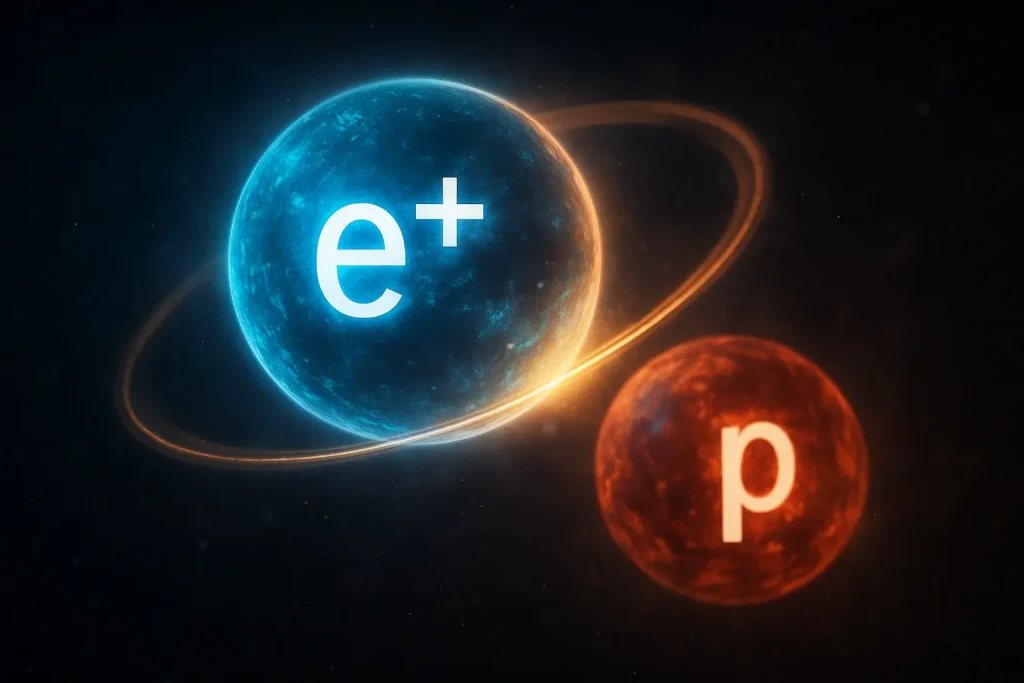
Antimatter and Matter
Antimatter’s core lies in antiparticles. Each antiparticle mirrors a known particle with the same mass but opposite charge and quantum properties. Quantum numbers, like spin, baryon number, and lepton number, define a particle’s state. For antiparticles, these numbers are inverted. For example:
Electrons have a negative charge and a lepton number of +1. Positrons have a positive charge and a lepton number of -1.
Protons have a positive charge and a baryon number of +1. Antiprotons have a negative charge and a baryon number of -1.
Neutrons are neutral but have a baryon number of +1. Antineutrons have a baryon number of -1.
Some particles, like photons (light particles), are their own antiparticles. They lack a distinct counterpart. This also applies to certain mesons, such as the pi-zero meson, and the Higgs boson.
Antiparticles reveal a deep symmetry in physics. Every particle interaction has a mirrored antimatter counterpart. Yet, this symmetry isn’t fully realized, as the universe is mostly matter. Understanding this asymmetry is a major focus in particle physics and cosmology.
Beyond common particles, exotic antiparticles like antineutrinos and antileptons appear in processes like beta decay. In beta-plus decay, a proton turns into a neutron, emitting a positron and an antineutrino. This reaction is vital for nuclear stability and antimatter’s natural role.
Studying antimatter alongside matter helps probe the universe’s fundamental forces. By comparing their behaviors, scientists test principles like CPT (Charge, Parity, Time) symmetry. This principle states that physical laws remain the same for particles and antiparticles under specific transformations.
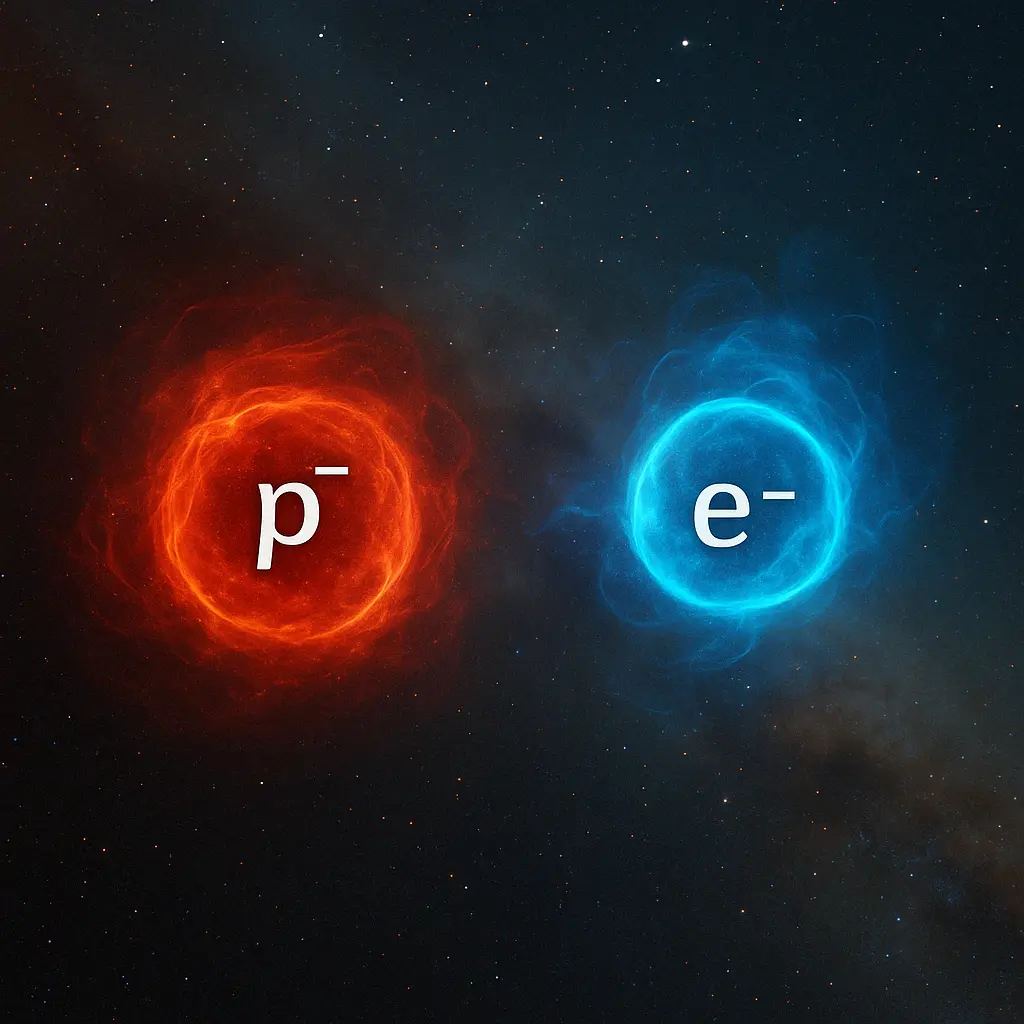
Production of Antimatter
Antimatter is rare in nature, making its production a significant achievement. It can be produced both naturally and artificially. Naturally, antimatter forms in high-energy cosmic events. Cosmic rays—energetic particles from space—collide with atmospheric atoms, creating antiparticles like positrons and antiprotons. These antiparticles quickly annihilate when they encounter matter.
Radioactive decay is another natural source. In beta-plus decay, a proton becomes a neutron, releasing a positron and a neutrino. Extreme astrophysical environments, like galactic cores or near black holes, also produce antimatter under intense conditions.
Artificially, particle accelerators are the main way to produce antimatter. CERN is a leader in this field. Facilities like the Antiproton Decelerator (AD) and the Extra Low Energy Antiproton ring (ELENA) produce and study low-energy antiprotons. These antiprotons are combined with positrons to form antihydrogen, the antimatter version of hydrogen.
Producing antimatter requires immense energy and precision. Antiprotons are created when accelerated protons hit a metal target, producing various particles, including antiprotons. These are then collected, cooled, and slowed for study. Positrons are generated when high-energy electrons strike a target, creating gamma rays that form electron-positron pairs.
A major milestone came in 1995 when CERN synthesized the first antihydrogen atoms. By 2010, researchers trapped these antiatoms for up to 1,000 seconds, allowing detailed analysis. However, producing antimatter remains challenging. Creating just one gram would take billions of years and vast resources with current technology.
While CERN leads, other facilities worldwide contribute to antimatter research. At Japan’s J-PARC, the ASACUSA collaboration studies antihydrogen and antiprotonic helium. They aim to measure the atomic spectra of these antimatter systems precisely. In China, the Heavy Ion Research Facility in Lanzhou (HIRFL) produced antinuclei like antihelium-4 in heavy-ion collisions. This observation in 2011 was the heaviest antinucleus detected then. The Relativistic Heavy Ion Collider (RHIC) at Brookhaven in the U.S. also detected antihelium-4 in 2018. This shows the global effort in antimatter research. Fermilab, once known for its Antiproton Source, now aids indirectly through neutrino experiments like NOvA and DUNE, involving antineutrinos.
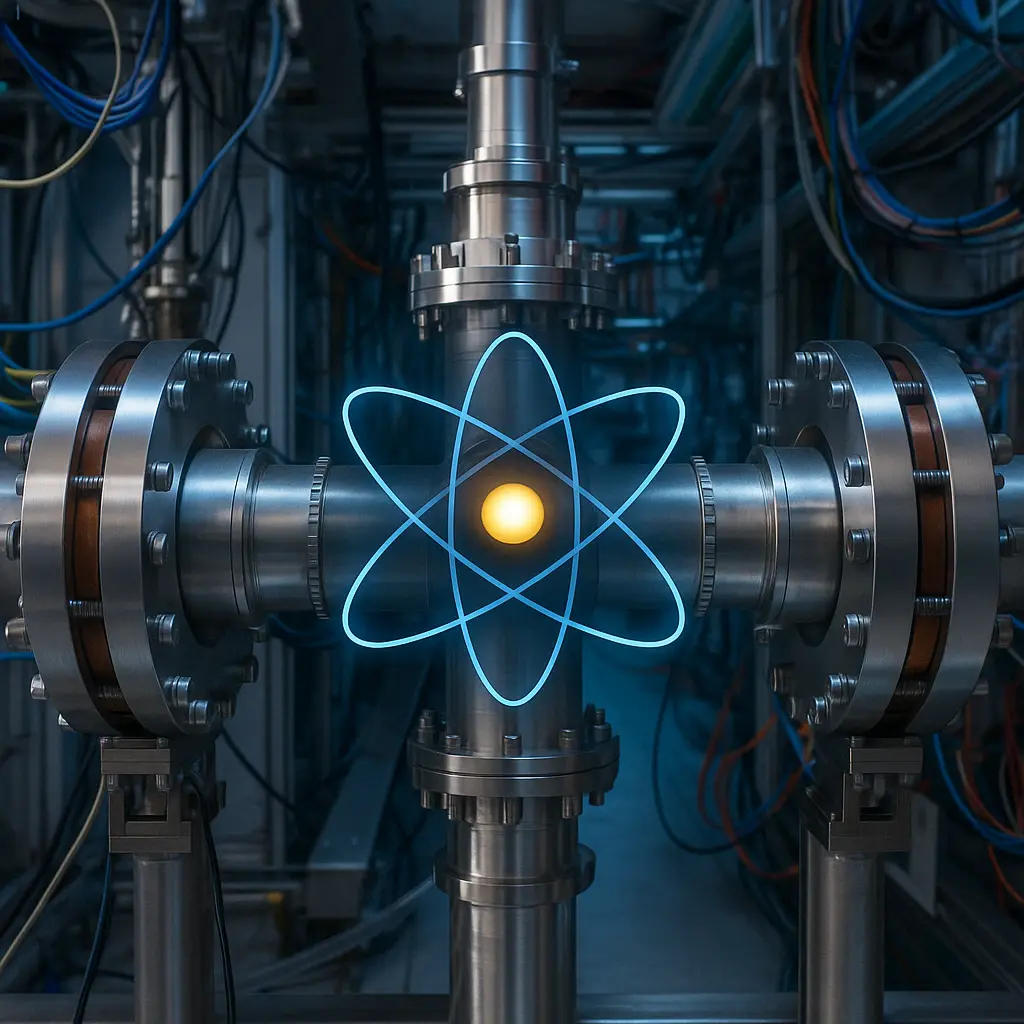
Production of Antimatter
Antimatter is rare in nature, making its production a significant achievement. It can be produced both naturally and artificially. Naturally, antimatter forms in high-energy cosmic events. Cosmic rays—energetic particles from space—collide with atmospheric atoms, creating antiparticles like positrons and antiprotons. These antiparticles quickly annihilate when they encounter matter.
Radioactive decay is another natural source. In beta-plus decay, a proton becomes a neutron, releasing a positron and a neutrino. Extreme astrophysical environments, like galactic cores or near black holes, also produce antimatter under intense conditions.
Artificially, particle accelerators are the main way to produce antimatter. CERN is a leader in this field. Facilities like the Antiproton Decelerator (AD) and the Extra Low Energy Antiproton ring (ELENA) produce and study low-energy antiprotons. These antiprotons are combined with positrons to form antihydrogen, the antimatter version of hydrogen.
Producing antimatter requires immense energy and precision. Antiprotons are created when accelerated protons hit a metal target, producing various particles, including antiprotons. These are then collected, cooled, and slowed for study. Positrons are generated when high-energy electrons strike a target, creating gamma rays that form electron-positron pairs.
A major milestone came in 1995 when CERN synthesized the first antihydrogen atoms. By 2010, researchers trapped these antiatoms for up to 1,000 seconds, allowing detailed analysis. However, producing antimatter remains challenging. Creating just one gram would take billions of years and vast resources with current technology.
While CERN leads, other facilities worldwide contribute to antimatter research. At Japan’s J-PARC, the ASACUSA collaboration studies antihydrogen and antiprotonic helium. They aim to measure the atomic spectra of these antimatter systems precisely. In China, the Heavy Ion Research Facility in Lanzhou (HIRFL) produced antinuclei like antihelium-4 in heavy-ion collisions. This observation in 2011 was the heaviest antinucleus detected then. The Relativistic Heavy Ion Collider (RHIC) at Brookhaven in the U.S. also detected antihelium-4 in 2018. This shows the global effort in antimatter research. Fermilab, once known for its Antiproton Source, now aids indirectly through neutrino experiments like NOvA and DUNE, involving antineutrinos.
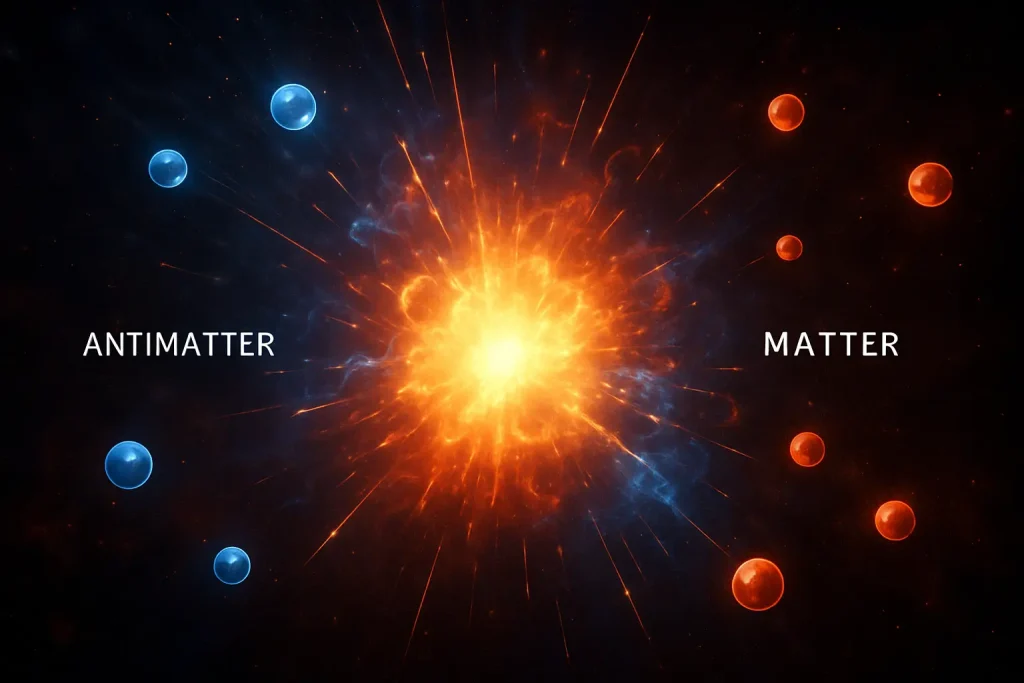
Applications of Antimatter
Antimatter has practical uses, especially in medicine. Positron Emission Tomography (PET) is a prime example. This technique uses positron-emitting tracers. When positrons annihilate with electrons, they produce gamma rays. These rays reveal metabolic activity, aiding diagnosis of conditions like cancer.
Antiprotons also show promise for cancer therapy. They could deliver precise energy to tumors through annihilation. However, this application is still experimental and faces technical hurdles.
In the future, antimatter could revolutionize space propulsion. Its annihilation energy far exceeds chemical fuels, making interstellar travel conceivable. Yet, production costs, storage issues, and scale make this impractical now.
In research, antimatter helps test the Standard Model of particle physics. Precise measurements of antiprotons and antihydrogen seek new physics beyond current understanding.
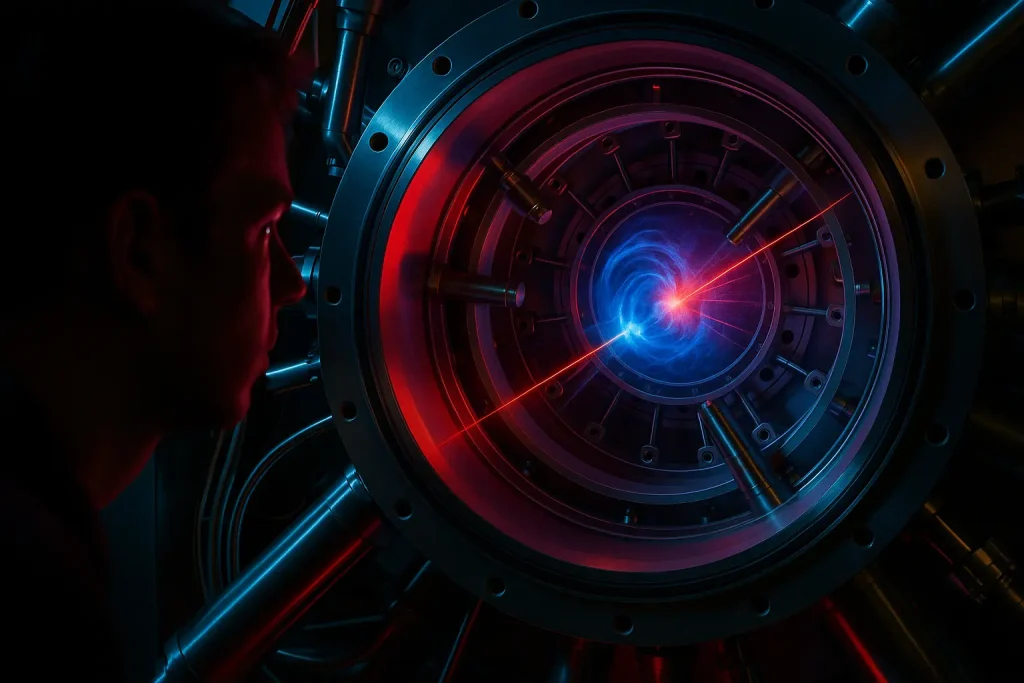
Astrophysical Context
Understanding antimatter’s distribution in the universe is crucial for addressing the baryon asymmetry problem. This problem highlights the imbalance where matter vastly outweighs antimatter, despite expected equal production after the Big Bang. Several instruments and missions detect antimatter signatures in cosmic rays.
The Alpha Magnetic Spectrometer (AMS-02), on the International Space Station since 2011, measures cosmic ray fluxes precisely. It searches for positrons, antiprotons, and potentially antinuclei like antihelium or antideuterium. In 2014, AMS-02 reported an unexpected positron excess. This could suggest new physics, like dark matter annihilation, or phenomena like pulsars. The source remains debated. AMS-02 also measured antiproton fluxes, generally aligning with secondary production from cosmic ray collisions. However, scientists keep analyzing these for primary origins.
The BESS missions, conducted between 1993 and 2008, measured antiproton spectra and searched for antihelium in cosmic rays. BESS set strict upper limits on antihelium abundance, finding none in millions of helium nuclei. This reinforced that our galaxy is mostly matter, limiting antimatter domain models.
Ground-based gamma-ray telescopes, like the Fermi Gamma-ray Space Telescope (launched in 2008), seek gamma rays from potential antimatter annihilation events. These could occur at matter-antimatter boundaries. So far, no clear evidence of large antimatter regions has been found, supporting a matter-dominated universe. Searches continue with instruments like the upcoming Cherenkov Telescope Array.
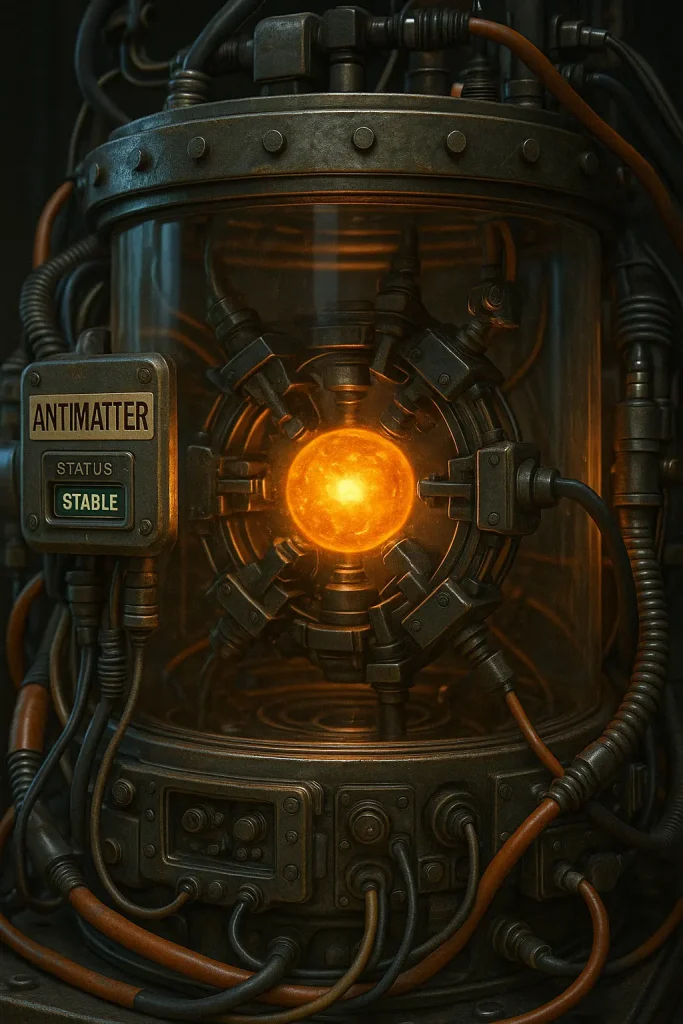
Safety and Ethical Considerations
Current antimatter research involves tiny quantities—typically nanograms—posing negligible risks. However, large-scale production raises significant safety and ethical concerns. Annihilating even small amounts of antimatter could release huge energy. For example, 1 gram of antimatter with 1 gram of matter would yield about 43 kilotons of TNT-equivalent energy. This requires strict containment and handling protocols to prevent disasters.
Production processes using high-energy accelerators carry radiological risks. These include ionizing radiation exposure for personnel and nearby communities, akin to nuclear facility risks. Plus, the energy-intensive process could have environmental impacts. For instance, it might increase carbon emissions if fossil fuels power it.
Ethically, antimatter technology has dual-use potential. In medicine, annihilation energy is safely used in PET scans with tiny positron amounts. However, scaling up for propulsion—enabling efficient spacecraft—risks militarization due to its explosive potential. This could heighten geopolitical tensions or create equity issues if only wealthy nations access it. As research advances, scientists, policymakers, and ethicists must oversee these challenges to balance innovation with responsibility.

Conclusion
Antimatter links scientific curiosity with deep cosmic insights. Its journey began with Dirac’s theoretical prediction and Anderson’s experimental proof. The scarcity of antimatter challenges our understanding of matter’s dominance. Meanwhile, applications like PET scans show its practical benefits in saving lives. Global efforts, from CERN to J-PARC and beyond, plus astrophysical searches with AMS-02 and BESS, deepen our knowledge of antimatter’s nature. Future discoveries may unravel cosmic mysteries or enable humanity to reach the stars. Antimatter remains an enduring enigma, captivating scientists and inspiring wonder.
Glossary
Baryon asymmetry: The imbalance between matter and antimatter in the universe, with matter predominant despite equal expected Big Bang production.
CPT symmetry: A principle stating physical laws stay invariant under charge conjugation (C), parity inversion (P), and time reversal (T).
Beta-plus decay: A decay process where a proton transforms into a neutron, emitting a positron and a neutrino.
Antihydrogen: The antimatter equivalent of hydrogen, made of an antiproton and a positron.
External References for Antimatter
- For an accessible explanation of what antimatter is and why it matters, see CERN’s Antimatter Overview .
- For detailed information on experiments and scientific research, visit Encyclopaedia Britannica’s Antimatter Article .
Leave a Reply